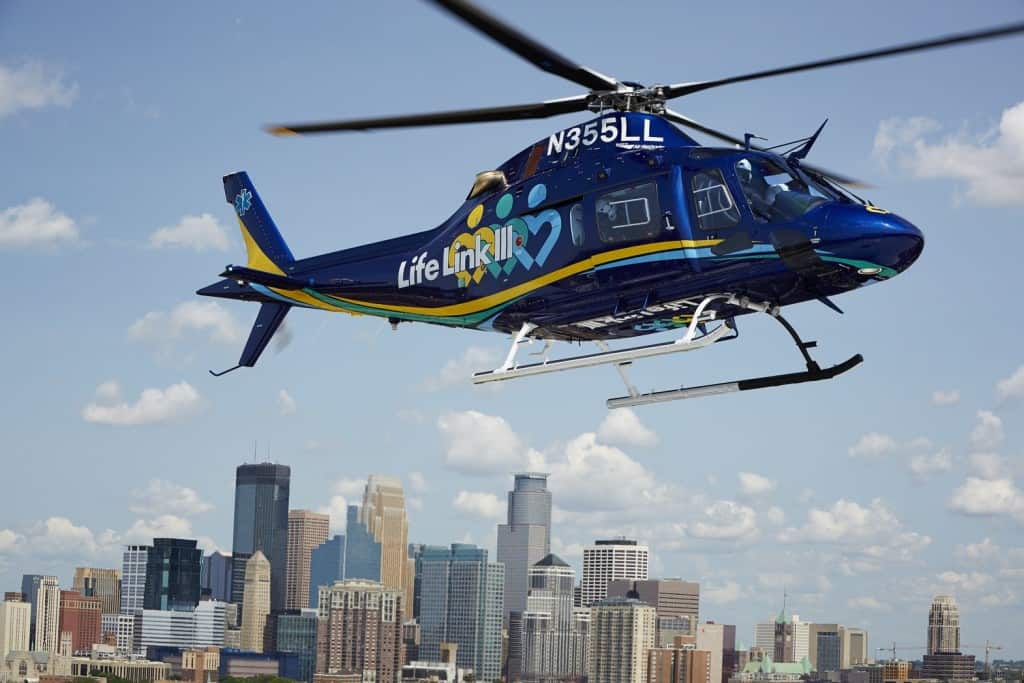
The coming of spring and warm weather means more ATV, motorcycle, boating, and other outdoor activity related accidents. This is a good time of the year to remind our first responders about medical helicopter landing zone safety.
Life Link III relies on first responders to secure a landing zone for our helicopter prior to arrival. When you have a helicopter respond to a scene, be sure to designate someone to communicate with the helicopter. With the widespread use of the ARMER radio system in Minnesota, we now have a consistent way for EMTs, EMRs, law enforcement, and firefighters to communicate reliably with the helicopter using the Statewide Tactical Talk Groups (STACS). In Wisconsin we have the ability to communicate via WISCOM or traditional VHF mutual aid channels. If a dangerous situation develops near the landing zone, tell the pilot to “Abort” or “Go Around”.
Here are a few reminders about requirements for a safe landing zone: the landing zone (LZ) should be at least 100 by 100 feet. The area selected should be firm and level. It should be free of wires trees, poles, etc. The area should also be free of ground debris and obstructions. The LZ should be at least 100 feet away from the patient and emergency personnel. The public should be kept at least 200 feet away. After dusk, mark the corners of the landing zone with low beam vehicle headlights, rotating beacons, or secure battery operated lights. During the day, try to mark the corners of the LZ with highly visible objects that can be secured. Avoid traffic cones and similar items that will blow away in the rotor wash and become a hazard.
Safety is important even after the helicopter has landed. Here are a few ground safety items to keep in mind: hearing and eye protection is highly recommended around the LZ. Rotor wash can kick up debris even when the area appears clear. Secure loose items like hats and sheets. If anything does blow away in the rotor wash, do not chase after it. You should not approach the helicopter unless accompanied by a crew member. Try to keep the pilot in view when approaching the helicopter. Never approach the helicopter from the rear. Allow the helicopter crew members to direct loading and unloading. Do not carry anything overhead (like holding an IV bag in the air) when approaching the helicopter.
Life Link III is proud to provide landing zone training to fire services, EMS, and law enforcement agencies within our service area at no cost. Go to https://www.lifelinkiii.com/safety.php for additional information, to print out an LZ safety poster, or to make a training request online. Finally, thank you for your assistance with keeping our crews safe.
Kory L. Sandoz, CFC, is a Communication Specialist for Life Link III® air medical transportation serving Minnesota, Western Wisconsin and eastern North Dakota. Photo courtesy of Life Link III.
Reference: CDC Guidelines for Field Triage of Injured Patients, https://www.cdc.gov/mmwr/preview/mmwrhtml/rr6101a1.htm


